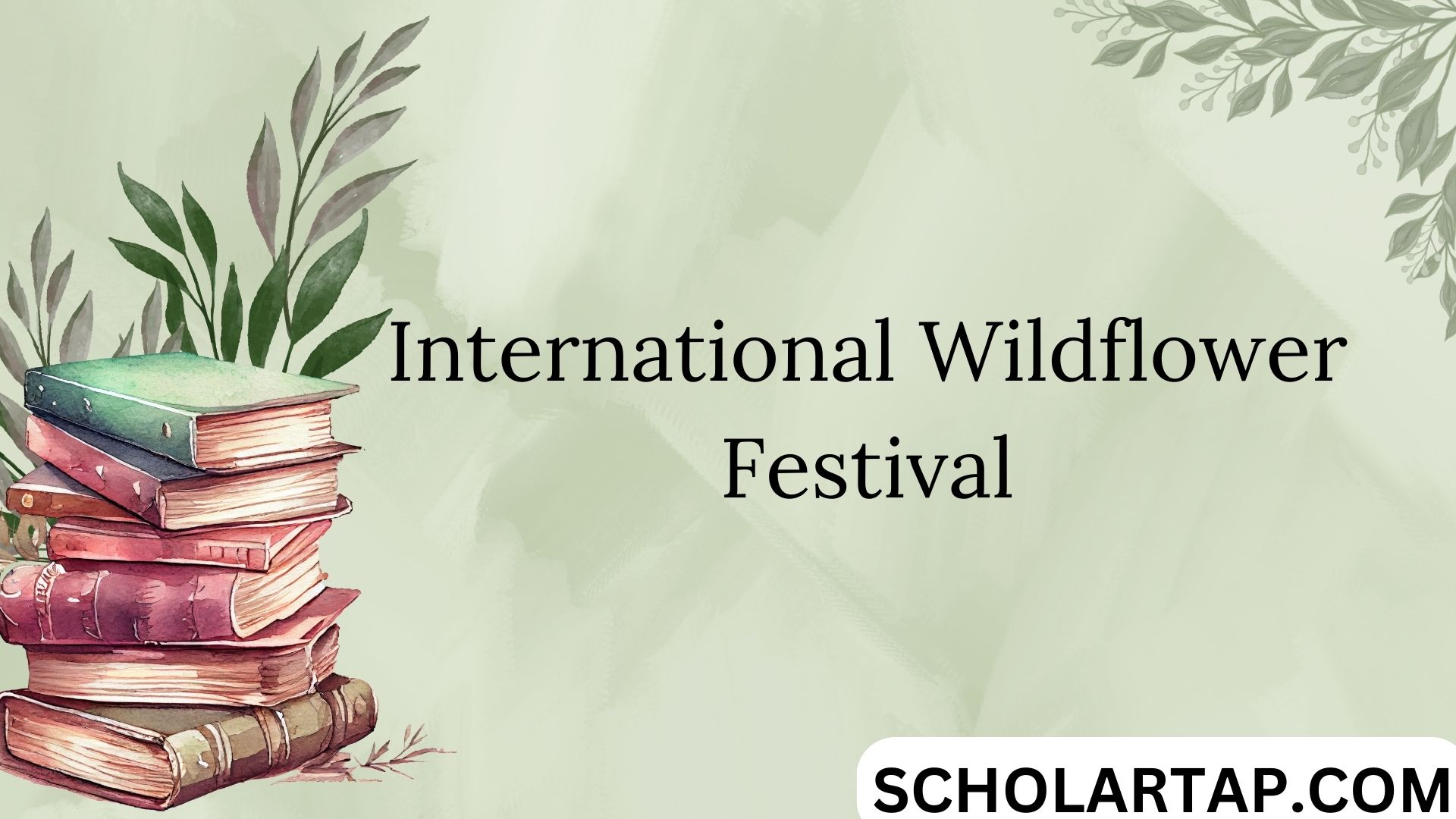
The International Wildflower Festival is a globally celebrated event showcasing the diversity and beauty of wildflowers. Held annually across different locations worldwide, this festival attracts nature enthusiasts, botanists, photographers, and tourists eager to witness vibrant landscapes and rare blooms. The festival aims to promote awareness of wildflower species, highlight their ecological importance, and celebrate the cultural connections that flowers represent across regions.
Where is the International Wildflower Festival Celebrated?
The International Wildflower Festival is observed in regions known for their native wildflower diversity. Some of the most famous locations include:
- Keukenhof Gardens, Netherlands – Known as one of the world’s largest flower gardens, Keukenhof showcases tulips, daffodils, and hyacinths in stunning floral arrangements.
- Australian Outback – Australia’s diverse landscapes display hundreds of wildflower species, including banksias, waratahs, and kangaroo paws, in vibrant colors.
- Alaska, USA – Known for its fireweed fields and stunning alpine flowers, Alaska’s wildflower season creates a mesmerizing landscape during the festival.
Why Celebrate Wildflowers? The Festival’s Core Objectives
- Promoting Biodiversity: Wildflowers play a crucial role in ecosystems, supporting various pollinators and maintaining soil health. The festival raises awareness about the importance of preserving wildflower habitats.
- Cultural Heritage: Flowers have deep-rooted connections to many cultures and have symbolized everything from peace to prosperity. The International Wildflower Festival often includes cultural events that highlight these connections.
- Ecotourism and Local Economy: These festivals boost local tourism and economy, attracting tourists who support local artisans, photographers, and tour guides while learning about the importance of conservation.
- Education and Conservation: The festival emphasizes educating attendees on the conservation of wildflowers and their habitats, supporting eco-friendly practices to protect these natural resources.
Key Highlights of the International Wildflower Festival
1. Floral Displays and Exhibitions
- Many festivals feature wildflower exhibitions, including arrangements that showcase rare, endangered, and exotic species.
- Botanical gardens and local artists create landscapes that bring the magic of the wild into the city, with diverse blooms organized by color, species, and region.
2. Guided Nature Walks and Hikes
- Visitors enjoy guided wildflower hikes led by botanists and local experts, who provide insights into native flora, growth patterns, and ecosystems.
- Hikes often incorporate interactive experiences where attendees learn how flowers adapt to specific climates, offering a rare chance to view wildflowers up close in their natural environment.
3. Eco-Friendly Workshops and Presentations
- Workshops on sustainable gardening, the role of wildflowers in pollination, and eco-friendly practices are integral to the festival.
- Expert-led presentations on topics like native plant gardening teach attendees to create wildlife-friendly gardens using indigenous flowers.
4. Photography Competitions and Art Displays
- Wildflower photography competitions invite photographers to capture the essence of the festival. These contests highlight flowers in natural settings, and winners are often awarded for the most unique or vibrant shots.
- Art exhibits showcase works inspired by wildflowers, from paintings to sculptures, celebrating the aesthetic and cultural value of these blooms.
Top International Wildflower Festivals to Attend
- Chelsea Flower Show, United Kingdom
- Held annually in London, the Chelsea Flower Show showcases horticultural artistry with an impressive wildflower display that draws visitors worldwide.
- Texas Wildflower Festival, USA
- Celebrated in Texas, this festival highlights the state’s extensive variety of wildflowers, including bluebonnets, Indian paintbrush, and primrose.
- Western Australian Wildflower Season
- Australia’s wildflower season sees thousands of native flowers in full bloom, particularly in Kings Park, making it a top destination for nature enthusiasts.
- Japan’s Fuji Shibazakura Festival
- Held near Mount Fuji, this festival features stunning pink moss phlox that creates a breathtaking landscape with Mount Fuji as a scenic backdrop.
Wildflower Tourism: Impact on Local Communities and the Environment
Ecotourism Benefits
- Festivals provide economic benefits to local communities by supporting small businesses and encouraging responsible tourism.
- Visitors staying in eco-friendly accommodations, participating in low-impact activities, and supporting local artisans reduce environmental footprints while promoting sustainable tourism.
Environmental Challenges
- While these festivals support conservation, high visitor numbers can place pressure on delicate ecosystems. Responsible tourism practices, such as designated walking trails, help protect wildflower habitats from being damaged.
How to Plan Your Visit to the International Wildflower Festival
- Timing Matters: Check the bloom seasons of your destination, as wildflower peaks vary by region and climate.
- Local Guides: Opt for guided tours for a knowledgeable experience that enhances your understanding of the ecosystem.
- Eco-Friendly Practices: Use eco-friendly travel practices by choosing biodegradable products, keeping to designated trails, and respecting wildlife.
Conclusion:
The International Wildflower Festival offers more than a visual feast; it is a vibrant reminder of nature’s power, beauty, and fragility. By celebrating wildflowers, we not only appreciate their aesthetic value but also highlight the need for their preservation. Each wildflower tells a story, symbolizing ecological balance and cultural significance. So, next time you plan a nature getaway, consider visiting a wildflower festival – witness the beauty, support conservation efforts, and become part of a global movement to celebrate and protect these natural treasures.
Leave a Reply